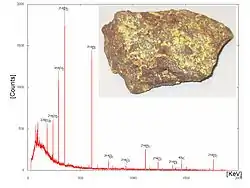
Intensity astronomy is a lecture. It is an offering from the radiation astronomy department. Although under development, it may eventually be used as a lecture in the advanced undergraduate course principles of radiation astronomy.
You are free to take this quiz based on intensity astronomy at any time.
To improve your scores, read and study the lecture, the links contained within, listed under See also, External links, and in the {{radiation astronomy resources}} template. This should give you adequate background to get 100 %.
As a "learning by doing" resource, this quiz helps you to assess your knowledge and understanding of the information, and it is a quiz you may take over and over as a learning resource to improve your knowledge, understanding, test-taking skills, and your score.
Suggestion: Have the lecture available in a separate window.
To master the information and use only your memory while taking the quiz, try rewriting the information from more familiar points of view, or be creative with association.
Enjoy learning by doing!
Quiz
Hypotheses
- Intensity-based questions may require extensive facility with detectors.
See also
References
External links
{{Radiation astronomy resources}}Template:Sources resource